
Outside of utilizing the freezer as a quick food storage solution, canning is the best way to store food for extended periods of time.
With a fully stocked pantry, you can even survive for months without ever leaving your home! Of course, if that is your intention.
If survivalism – or thrivalism – isn’t your top priority, there are plenty of other benefits to canning that you may find appealing.
Canning takes zero energy once the jars are filled, making it an excellent option for off-grid living. On a side note: learning to can will help you save money on your electric bill too.
Home canning also helps diversify your diet, as you preserve the garden/market goods seasonally. It also encourages food security and quality, so that you are in control of all the ingredients that go in your food. Don’t care for additives, preservatives or jars full of sugar?
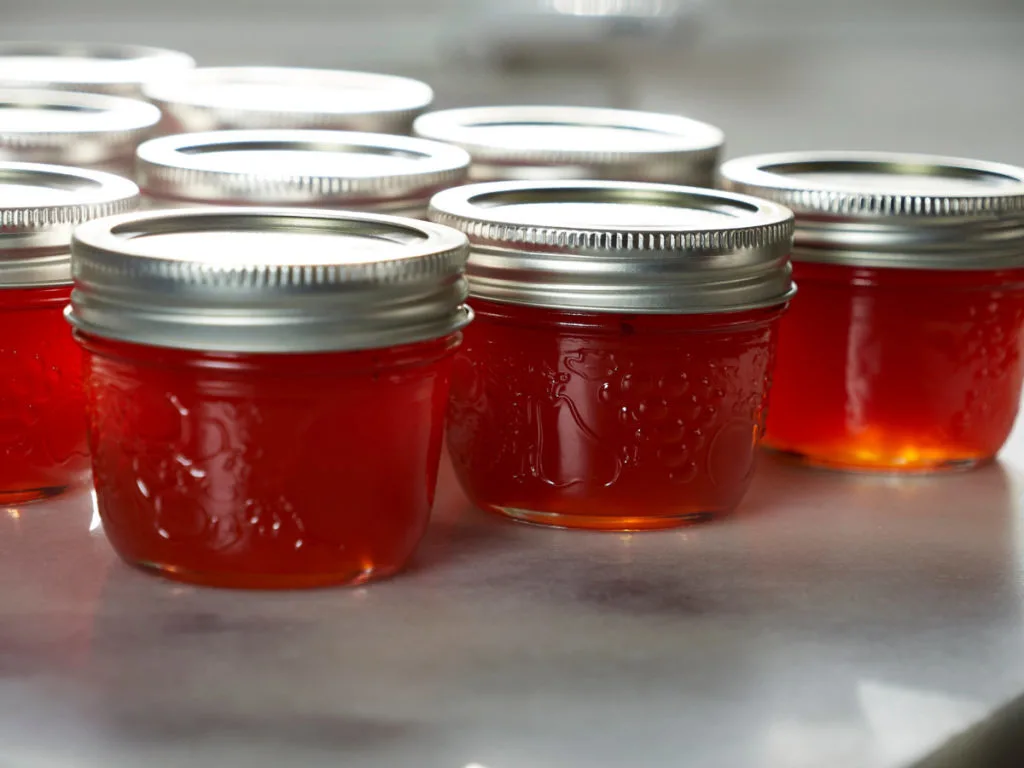
Leave all that stuff out, and keep the wholesomeness in.
But sometimes life gets in the way, or we simply don’t feel capable enough to carry out the momentous job of searching for recipes, cutting and chopping up all the fruits and veggies, heating them on the stove in sweltering temperatures, packing them in hot jars, hoping for the future that they seal…
All of a sudden, canning starts to sound like a lot of hard work! It is certainly true, that canning is a labor of love.
And that love needs to come from somewhere.
For the love of life-sustaining food, for the sake of self-reliance, for the gift of being able to preserve and share your abundant harvests with others.
Quick tips for beginner canners
If you’re just getting acquainted with canning, it’s best to start with canning high-acid foods. High-acid foods involve mainly fruits (including tomatoes) and those items with vinegar added to them, such as pickles and chutneys.
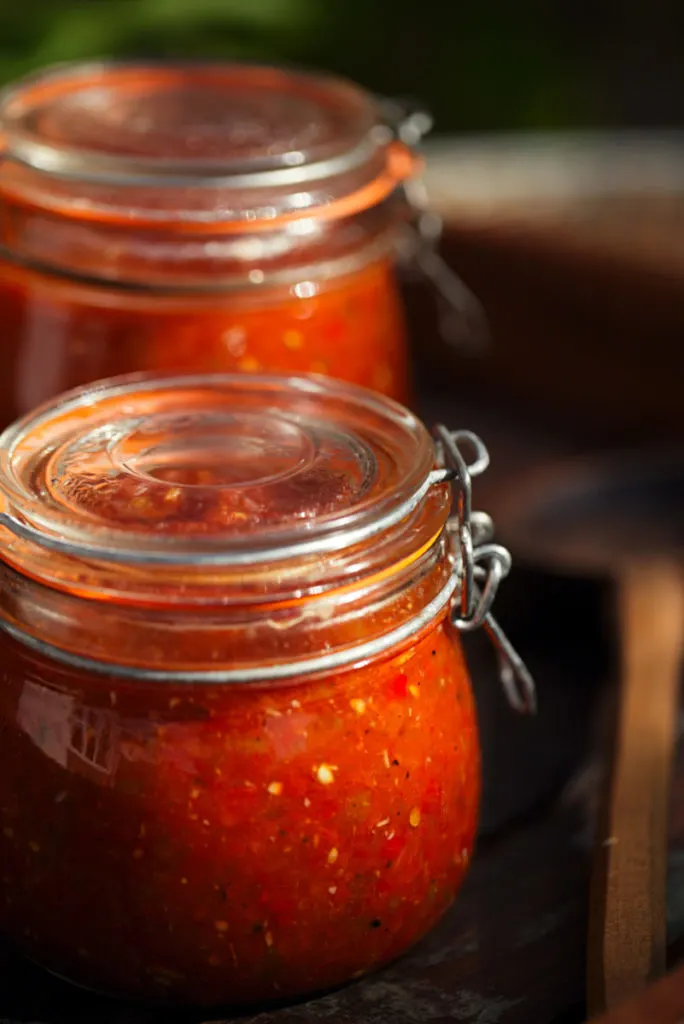
Hold off on learning to can low-acid foods, until you become familiarized with the process of safely packing your low-pH garden crops into jars. Once you begin to learn the ins and outs of canning corn, peas, carrots and meat, all canning recipes will be at your fingertips.
Beginners need to start somewhere.
Grab a few jars, some new canning lids and revive that water bath canner hiding in the back of the closet. It’s time to get preserving!
Almost.
First, ask yourself:
What is stopping you from learning to can like a pro?
Do you feel that you still have a lot to learn about canning?
Are you holding off on filling your pantry shelves with rows of delicious jars of homemade jams, jellies, pickles, chutneys and sauces, because you’re afraid of making a mistake?
Or are you ready to jump right in and learn something new?
Whatever your reasons, or inhibitions, the following list of simple canning recipes for beginners is here to inspire you to take action.
Try one or sample them all. Just be sure to pick your favorite fruits and vegetables that you don’t mind eating all winter long.
Then decide where you can put those 100 jars of home-canned goods in storage.
Simple Canning Recipes for Jams and Sauces
No pantry is complete without a few jars of homemade jam, ready and waiting at your disposal.
It may be much, much easier than you think. And with practice, you’ll be able to make a large batch of jam in a single afternoon.
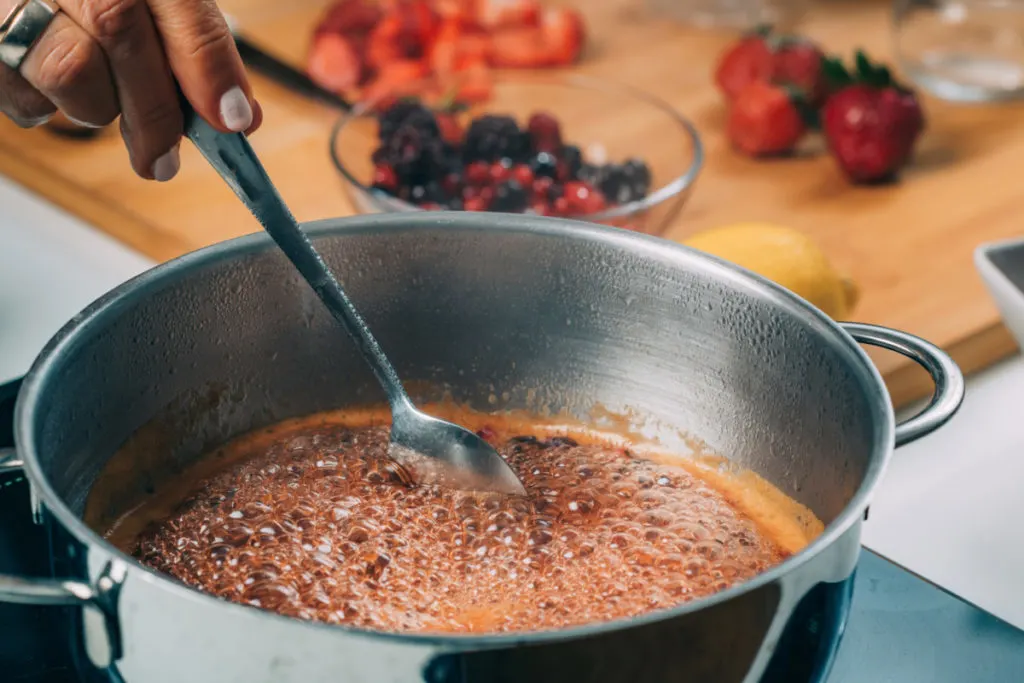
I know, I know. There is some work involved in canning.
Plenty of it, depending on how complex the recipe is.
Yet, many hands make light work. If you have some helpers in your kitchen, prepare them for the cutting and stirring tasks at hand. This way, everyone learns something new, from young to old, and they will be able to pass down the information and knowledge of canning to someone else.
Again, if you’re new to canning, start simple. Fruits are among the easiest to preserve.
Here are a few delicious and uncomplicated recipes to get you started.
Note: all of the following recipes require the knowledge and know-how of using the water bath canning method of preserving food.
1. Applesauce
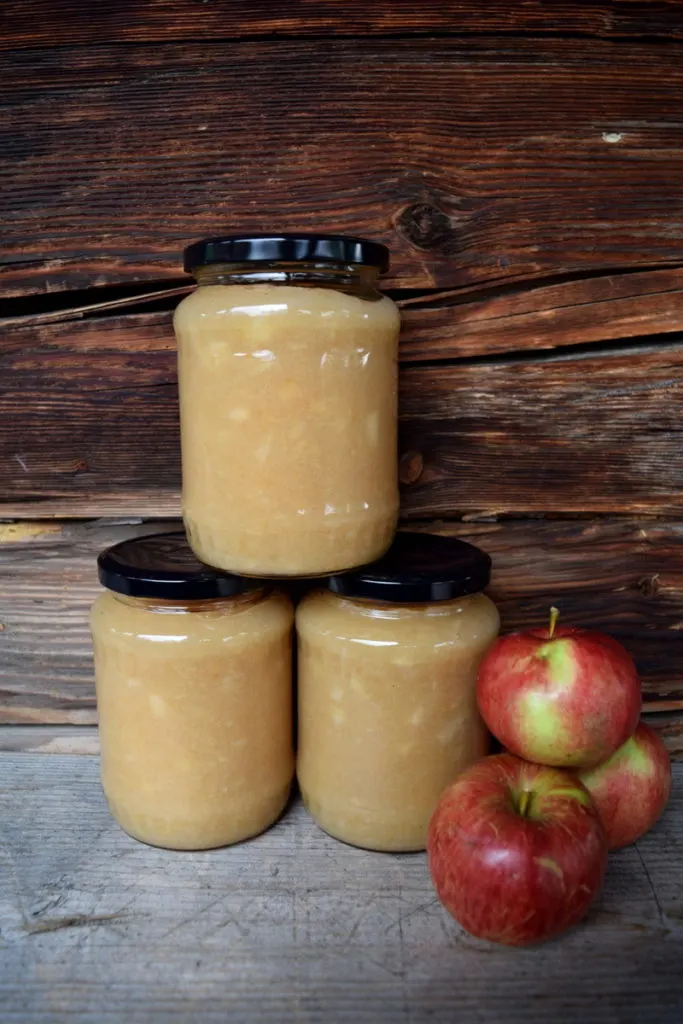
While apples can be preserved in a myriad of ways, canning applesauce may be one of the first recipes you try.
It really doesn’t matter what kind of apples they are, just be sure to sample while cooking, to get a feel for how sour your sauce may be, and adjust the flavor accordingly.
Here are a couple of apple processing tips: be sure to peel the apples if you want a smooth sauce. The skins separate, curl up and harden as you cook the cut apple pieces and can be quite unpleasant as you try to chew them.
Or you can core the apples and cook them with the skins on, only to remove them with a strainer once they have cooked for long enough.
If you prefer a chunkier sauce, cut the apples into larger pieces, and do not puree them or use a masher.
Better yet, make some jars of smooth applesauce and a few more jars of chunky applesauce. Add spices as you wish: cinnamon, allspice, nutmeg, powdered ginger or lemon zest. Know that you can sweeten your canned applesauce with honey or sugar, or leave it unsweetened as nature intended.
Apples are high in acid, so you have nothing to worry about, as far as them not preserving well enough!
In winter, you can eat your homemade applesauce straight from the jar, or fold some into a mouthwatering applesauce cake.
2. Apricot jam
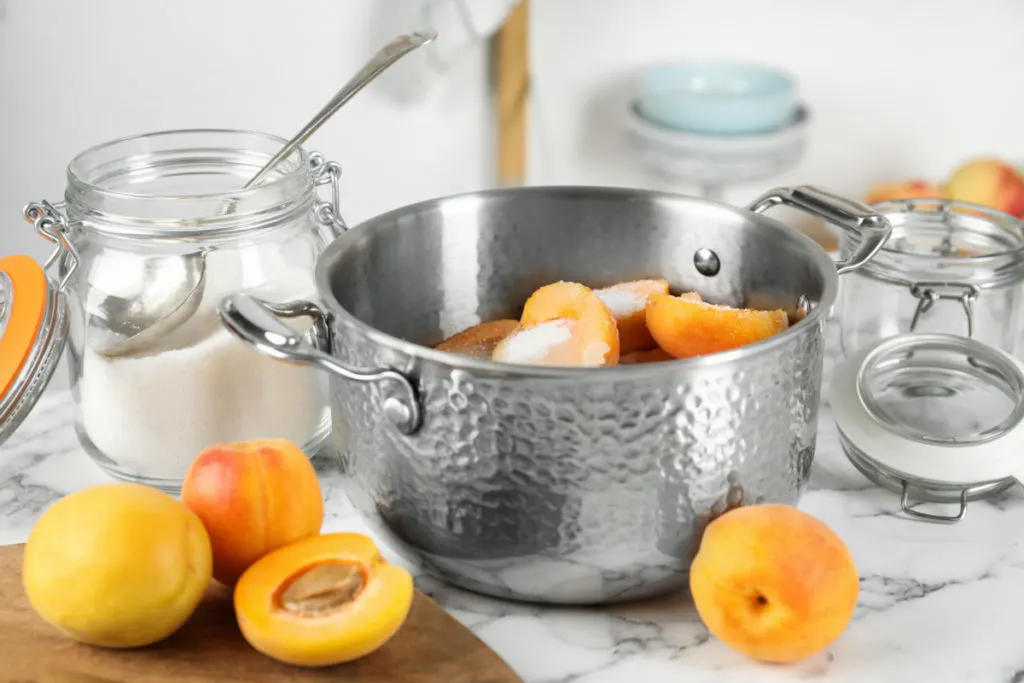
If you have a crate, or two, of apricots to preserve, dehydrating is a wonderful option if you also enjoy plenty of sunshine – or if you own enough racks in your dehydrator.
Apricot jam is your next best bet.
Many people can their apricots with sugar, though if you’re looking to reduce your sugar intake, this sugar-free apricot jam recipe is definitely for you. You can always add some raw honey to it when you pop open the jar!
The quality in your end product really comes in knowing which apricots make the best preserves. Watch out for apricots that have tough fibers in them, unless you are willing to strain your jam before canning.
You will also want to work with apricots that are perfectly ripe. Not over-, not under-.
3. Raspberry jam
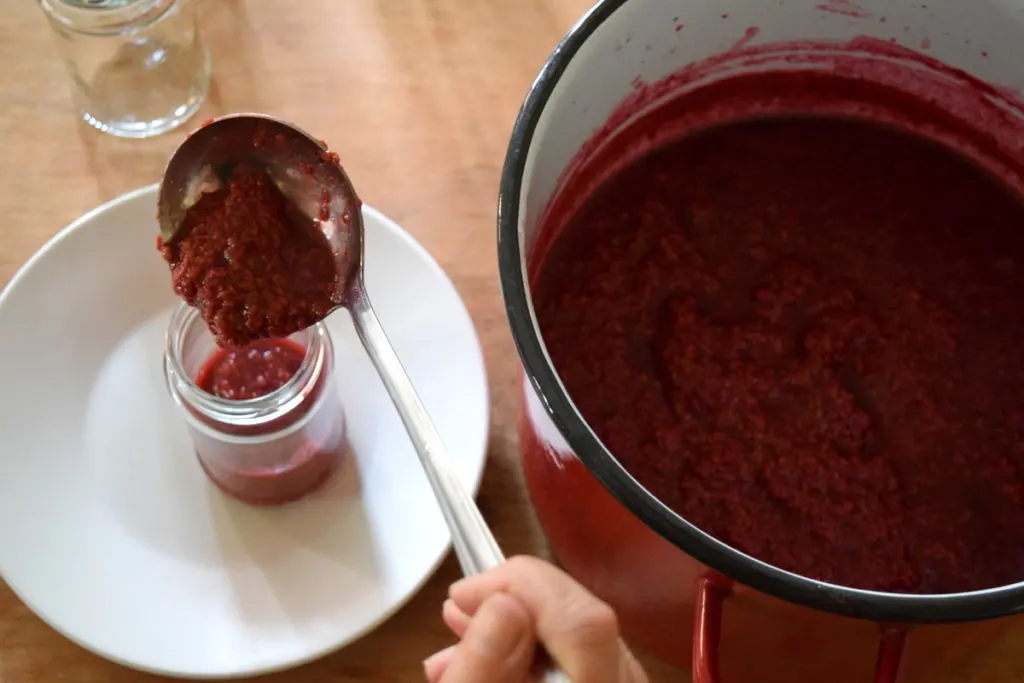
If you happen to have a raspberry patch nearby, it only makes sense to can a few jars of old-fashioned raspberry jam.
It only takes two ingredients. Raspberries and sugar.
Cook those together until a rolling boil and thicken, taking in the beautiful aroma as you work. Then seal them in jars and your work is done.
Making raspberry jam is about one of the easiest recipes you can make. After all, the hardest work is in picking the berries before you get started.
4. Strawberry jam
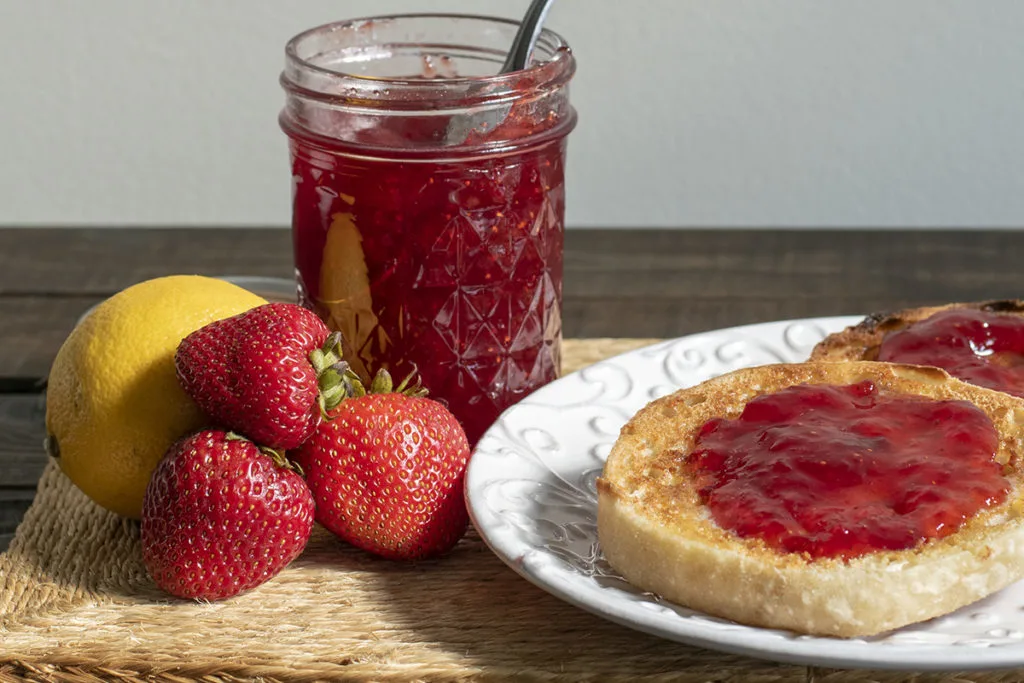
It is always fun to grow strawberries at home, but if that doesn’t provide for all of your canning and fresh strawberry eating needs, then go out and pick your own from a local farm. Making your strawberry preference organic, if at all possible.
As with other berries, many times it feels extremely efficient to simply wash them, toss them into a container and put them in the freezer for later enjoyment. That’s not a bad option if you are strapped for time.
However, strawberry jam is one of the loveliest jars to have tucked away in your pantry, to add joy to your lazy days of pancakes and celebration sundaes. On the bright side, this recipe also takes just two ingredients, with the third being optional: vanilla bean or vanilla extract.
5. Cherries in honey
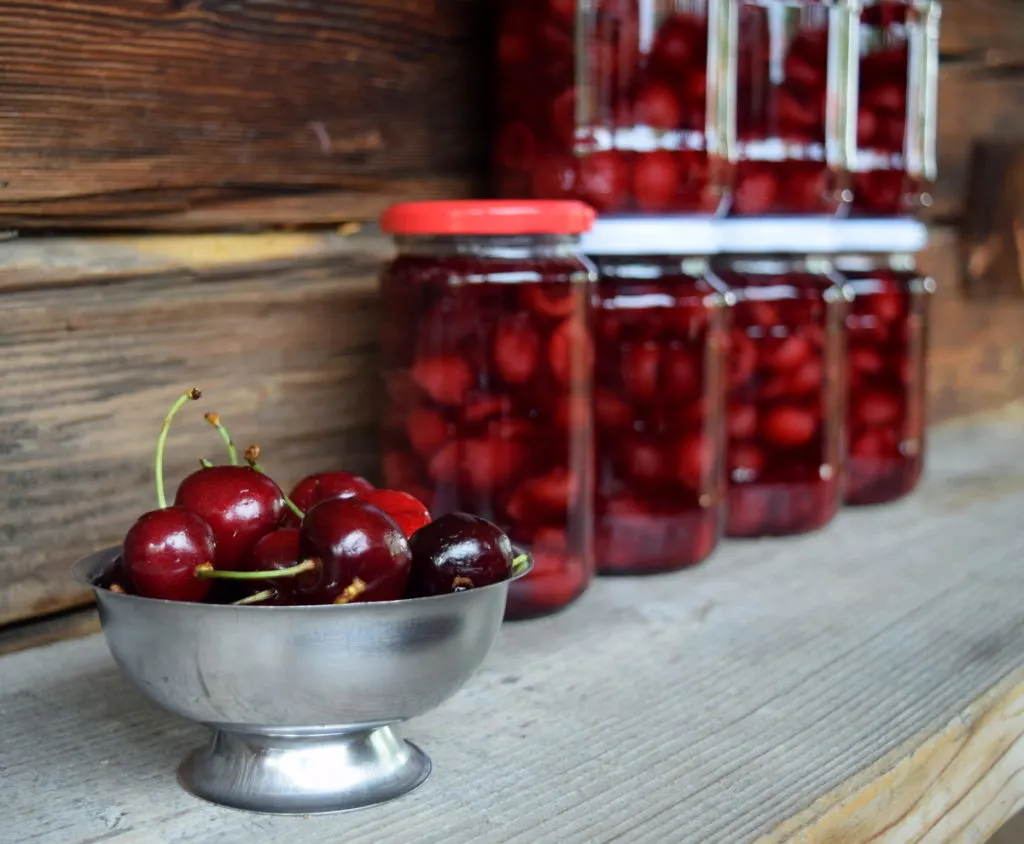
One of my favorite fruits to harvest in early summer is sour cherries, followed by mulberries and cherries. You might easily switch that order around though, if you enjoy life on the sweeter side.
Since sweet cherries are typically a big hit with dinner guests and visitors, we tend to make multiple jars of cherries in honey. Aromatic linden honey to be more exact.
Cherries in honey can be served as a delectable dessert, as is. You could serve it alongside a roast, or bake it in a pie. Plus it is super easy to make, as long as you have patience for pitting cherries.
Simple Pickle Canning Recipes
When you’re just learning how to can, it is easy to get carried away with making jams! The recipes are easy to follow and they always make for a sweet treat, reminiscent of summer days gone by.
As temperatures drop and winter pushes its way in, you may find yourself reaching for a jar of crisp pickles instead.
Start in summer and be prepared for later crunching and munching.
6. Dill pickle slices and spears
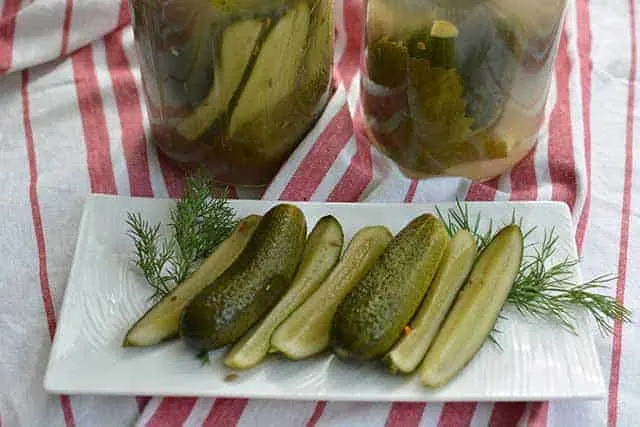
There isn’t anyone out there who doesn’t like a nice crisp and crunchy pickle. Right? Well, maybe there are a few who would turn their heads away from these dill pickle spears in apple cider vinegar, but you cannot trust everyone’s opinion.
They are simply amazing and far better than any pickle you can buy from the store. Plus, many ingredients can be harvested straight out of the garden.
All you need to can several jars, are cucumbers, your favorite ACV, salt, garlic, hot peppers, fresh dill, horseradish and spices (turmeric, peppercorns, coriander seed, bay leaves or dill seeds).
7. Zucchini pickles
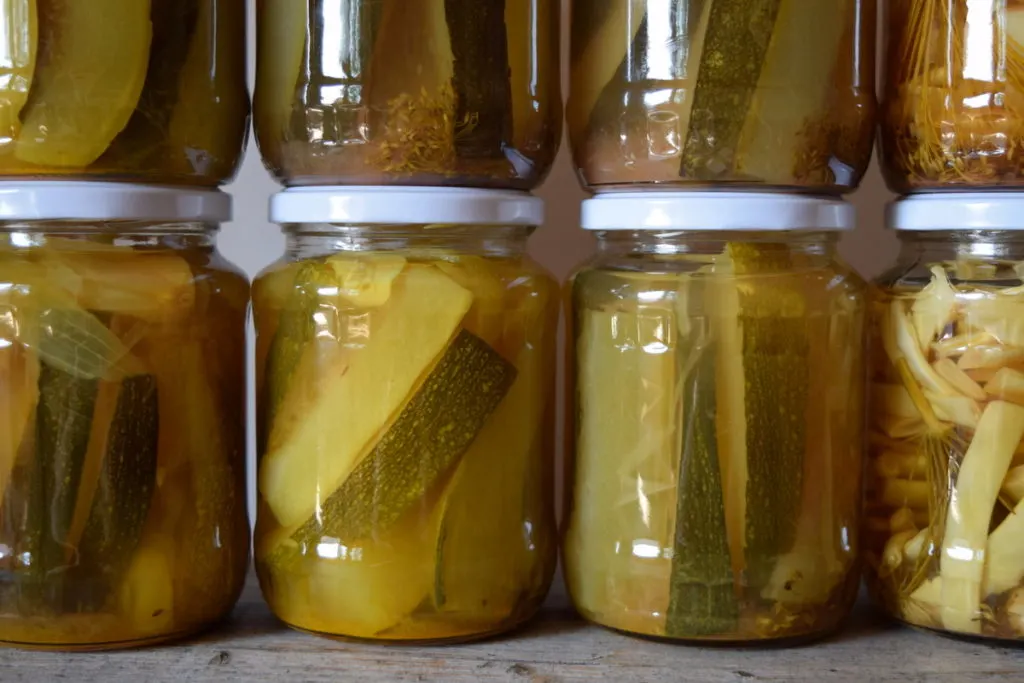
The first time I canned pickles was not with cucumbers. It was with a glut of zucchini instead. The flavors still remain imprinted in my mind. Since zucchini is one plant in the garden that grows no matter what, we always make several jars each year, by memory.
Here’s my zucchini pickles recipe.
8. Zucchini relish
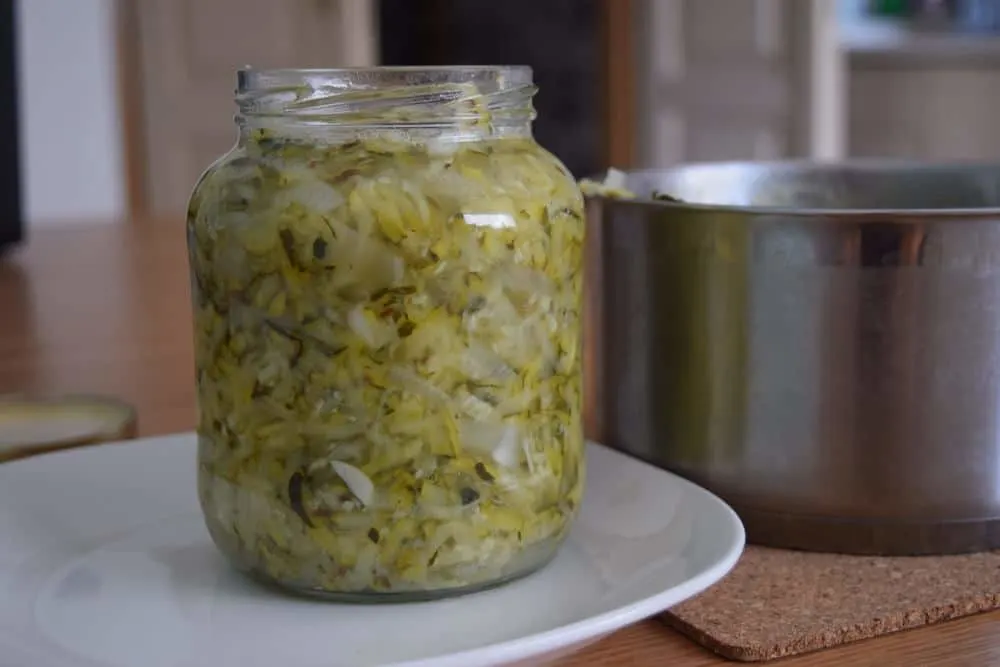
Savory zucchini relish is a fantastic way to use up older zucchinis that are headed into seed production, and the recipe is easy to scale up or down, depending on how much shredded zucchini you have.
If the skin has already become too hard, go ahead and remove that before grating, otherwise, feel free to grate the entire zucchini.
Serve it alongside roasts or stuffed baked potatoes, or put a spoonful on your salad or sandwich. It is unlike anything you can buy from the store, be proud of it – all 25 jars!
Simple Chutney and Salsa Recipes
To have a well-rounded set of options, there should be more to your pantry than jams and pickles.
Spice up your life with chutneys and salsas too!
Here are some of the simplest canning recipes to get started.
9. Apple chutney
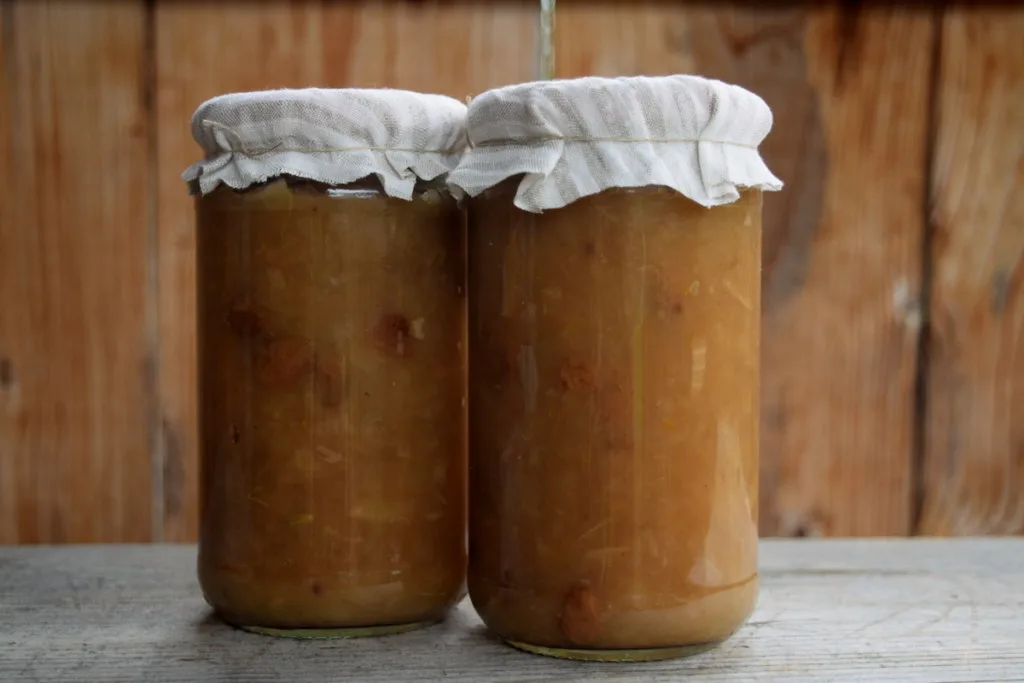
You can only eat so many jars of canned applesauce or apple compote. When that realization hits you, hopefully now (in summer), not in winter, you can lean on chutneys to bridge that gap between jams and pickles.
They are fruity, vegetably, sour and spicy with a hint of sweetness all in one.
Perfect as a winter-pick-me-up.
While chutneys are a little more complex to make than either pickles or jam, they are certainly a necessity, and still easy to make. It is only the amount of ingredients, mainly spices, that might make them seem overwhelming at first.
Go for flavor, and try a few jars of this apple date chutney on for size.
10. Tomato chutney
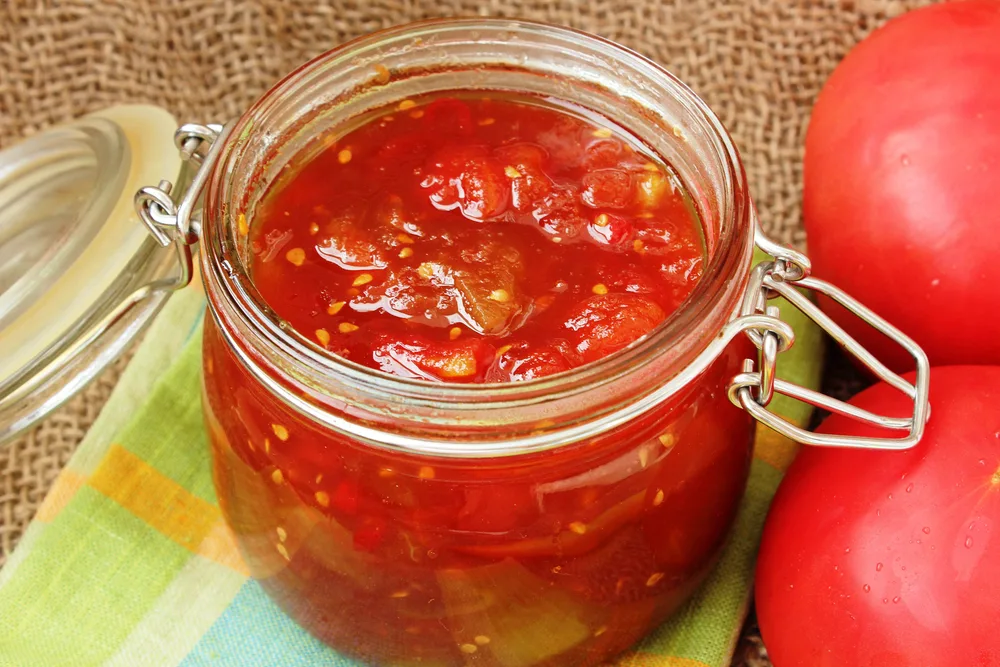
Out of the 26 ways to preserve tomatoes, tomato chutney should probably be number one – that’s just my well-informed bias there.
While only slightly more difficult than making tomato sauce, it will challenge you to keep improving your canning skills as you increase your confidence in the kitchen.
Follow this addictive tomato chutney recipe and be ready to receive compliments on your gifts – should you choose to share that canning love.
11. Pear chutney
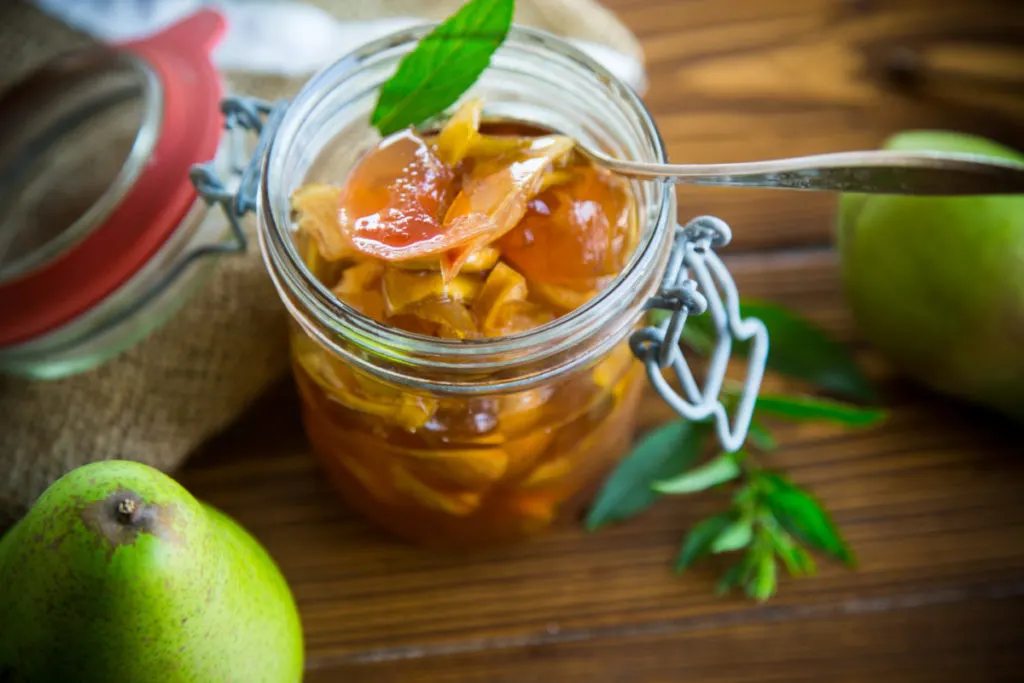
Pears can easily be turned into sauces, just like apples. They can also be canned in a light syrup, which is enjoyable for kids of all ages.
However, if you are seeking to save shelf space and condense that pear flavor into something truly special, why not try making pear chutney instead? It is beyond delicious.
12. Canned tomato salsa
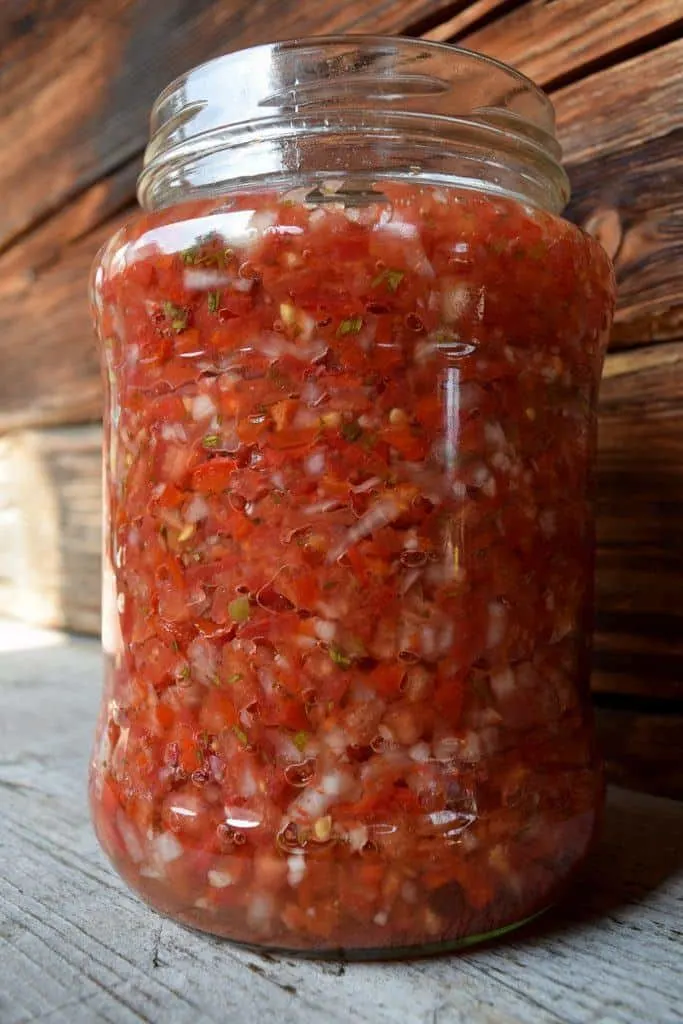
Fermented salsa is a fantastic treat in the heat of summer, though its glory usually doesn’t last more than a couple of weeks.
If you have a love for Mexican foods or salsa in general, it is best to find a simple canning recipe and stick to it, at least for a while before trying something new.
Even if you are at the beginning of your canning journey, learning to make salsa is essential. To put it more clearly, anything you enjoy eating is essential to learn how to create it, grow it or can it.
Start with these recipes and enjoy your tomatoes all year long:
The Best Homemade Salsa (Fresh Or For Canning) @ Mel’s Kitchen Cafe
The Secrets To Perfectly Canned Salsa @ Old World Garden Farms
Now that you have a dozen simple canning recipes for beginners to start with, what will it be? Your first, second, third…

Get the famous Rural Sprout newsletter delivered to your inbox.
Including Sunday ramblings from our editor, Tracey, as well as “What’s Up Wednesday” our roundup of what’s in season and new article updates and alerts.

